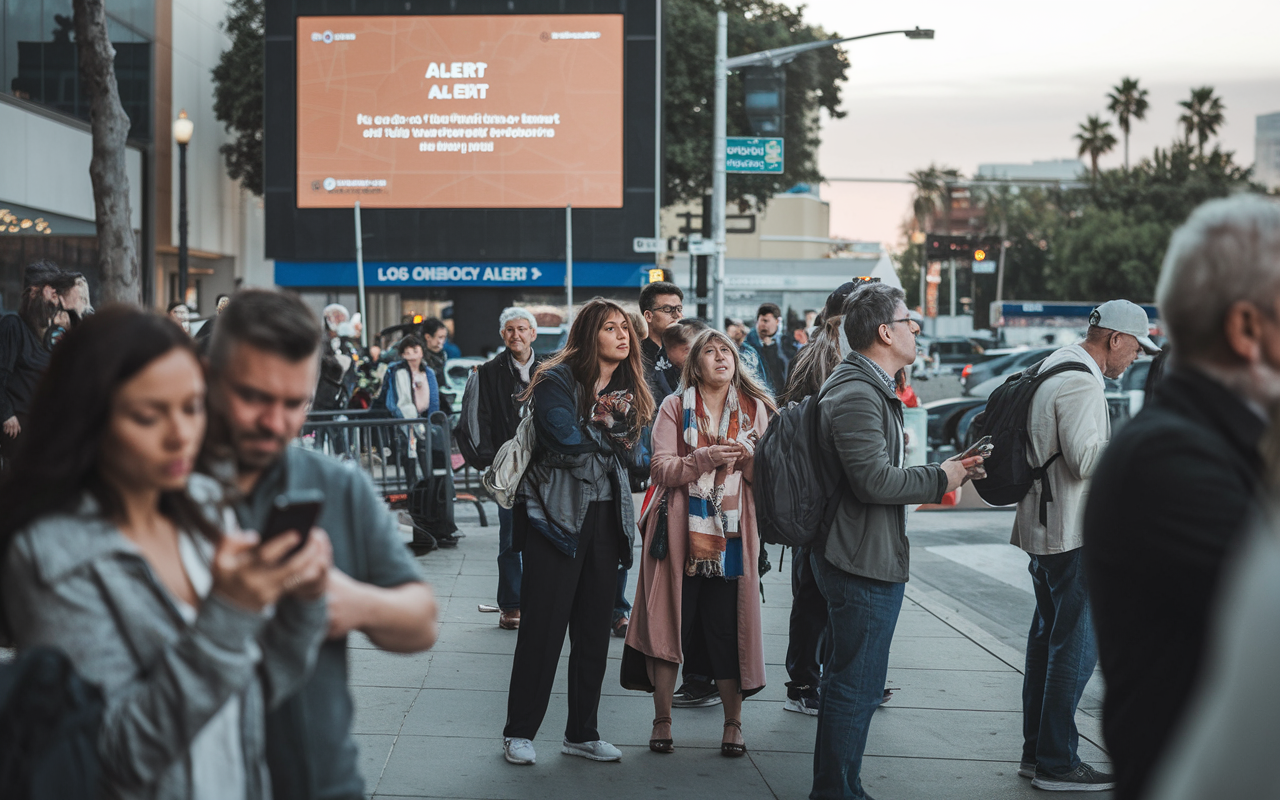🚨 The Chaos of Miscommunication: L.A.'s False Fire Alert Crisis 🚨
On January 9, 2025, nearly 10 million people in Los Angeles were jolted awake by a chilling text message: an evacuation warning for imminent danger. It was a scenario that no one in the city, already on edge from severe wildfire conditions, wanted to experience. 🔥 The potential for panic was palpable, especially given that many residents were already dealing with real threats from major fires, such as the Palisades Fire and the Eaton Fire, which had already displaced over 180,000 people. This incident highlights a glaring issue within our emergency alert systems and the importance of precise communication in critical times.
A Call for Clarity Amid Crisis
The intent behind emergency alerts is undeniably vital. They can save lives and provide much-needed direction during chaotic situations. However, when these alerts go wrong, as they did in this instance, they can also lead to confusion and panic. A follow-up correction issued 20 minutes later attempted to clarify the situation, indicating that the warnings were meant solely for those near the Kenneth Fire – a small comfort for many who were left feeling vulnerable and misinformed. 😟
Los Angeles Emergency Management Director Kevin McGowan openly expressed the frustration felt by residents, labeling the erroneous alerts a “serious breach of public trust.” This sentiment resonates widely among those who rely on these notifications as a means of safeguarding their lives and well-being. The unsettling nature of receiving multiple, conflicting alerts begs the question: how can residents trust their emergency systems moving forward? 🤔
Untangling the System's Failures
As investigations unfold, it's become clear that the failure stemmed from multiple points within the intricate alert system. While McGowan emphasized that it was a technical issue rather than a human error, the underlying complexity of the alert framework raises serious concerns. The alerts are sent through a layered system involving government agencies, telecommunications providers, and third-party software – a setup that could use significant reevaluation.
Analysts noted three main issues:
- Alerts being sent after expiration or cancellation.
- Repeating alerts causing unnecessary distress.
- Warnings reaching unintended areas.
These glitches reveal how vulnerable our emergency communication systems are and underscore the necessity for a complete overhaul to ensure such a failure never happens again. 🚫
Repairing the Trust
In the aftermath of this debacle, the immediate goal for emergency officials is not only to identify what went wrong but implore methods to enhance clarity in future alerts. Research has shown that effective alerts should contain key components: the source, hazard description, location, consequences, protective actions, and timing. Increasing detail in these messages could prevent misinterpretations and 🎯 save lives.
By focusing on clarity and specificity, authorities can avoid close calls that confuse and escalate fear among citizens. The recent notice served as a harsh reminder of how critical precise communication is during emergencies, pushing us to reconsider what protocols are necessary to rebuild public trust. 🔄
Final Thoughts 💭
The false fire alert sent to millions epitomizes an urgent need for improvements in emergency messaging systems. As we move forward, it's crucial for government officials, emergency management teams, and telecommunications providers to collaboratively develop a more reliable and transparent system. Trust is built on clear, accurate communication – especially during emergencies where every second counts. Let’s hope this serves as a wake-up call for the future.
Do you think the L.A. alert system needs a complete revamp? Share your thoughts! 💬
#EmergencyManagement #WildfireSafety

More Stories
Exciting News: The Summer I Turned Pretty is Becoming a Movie
Reflecting on Robert Redford’s Legacy of Integrity and Artistry
Sara Rivers Appeals Dismissal of $60 Million Lawsuit Against Sean Combs: A Fight for Justice in the Entertainment Industry